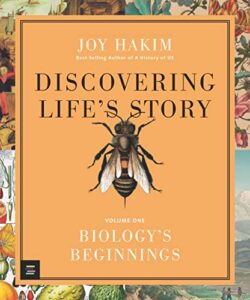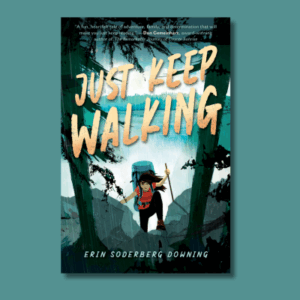 Published: 2023
Published: 2023
Genre: Nonfiction, Life Science, Biology, Science, History
Trigger Warnings: n/a
Summary: Trace the history of life science in the first of a four-part MITeen series by mega-best-selling author Joy Hakim, who brought us The History of US.
When did we start learning the scientific secrets of life? Step back to the Islamic Golden Age, when scholars ask questions about life science and medicine that will establish those fields. Chart a path through the Renaissance, as Leonardo da Vinci dissects cadavers by candlelight to learn human anatomy firsthand. In this first of four volumes spanning hundreds of years of scientific innovation and discovery, follow the evolution of life science up to the late 1800s, when a baffled Dutch biologist finds a tiny infectious particle destroying tobacco crops and gives this particle a new virus . With Biology’s Discovering Life’s Story , best-selling author Joy Hakim begins a quartet of volumes mapping the path of human discovery as we unlock the biological secrets of our own existence. Richly illustrated with archival source materials and fine art, this STEM treasure trove features a wealth of back matter certain to kindle the appetite of science lovers.
Review: I am recommending this text to both World History and Living Environment teachers in our district for use as supplemental and occasional readings in class. This book tells the story of how humans developed an inquiry on and study of life science after the Middle Ages. Written in highly accessible language, Discovering Life’s Story popularizes the history of science. I know a couple of students who would pick this book up on their own and find it interesting enough. Themes of curiosity and innovation carry the readers throughout centuries of well-told history.
There were a couple of places where the book dragged, but given the subject matter the fact that it held my attention at all is a testament to how engaging it is overall. I appreciated as well that the book includes biographies on women scientists that I’ve never heard of but who defied expectations of the time. It also uses correct language to talk about and recognize the contributions of enslaved people. The text is pretty focused on European history in the later chapters, though earlier chapters discuss the Aztecs and the Muslim world. This is the first volume in an at least 3-part series, so I’m hopeful there are even more global connections in the later volumes.



